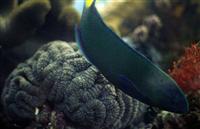Study wild animal health care with this Foundation Diploma. Wild animals in the wild or in captivity require specialist knowledge to ensure that they maintain good health. This course provides you with a detailed insight into the needs and health of wild animals.
You work through ten modules supported by our highly experienced and well qualified tutors. They are all more than happy to help with any questions or queries.
The course has ten 100 hour modules, consisting of six core modules and you then choose four elective modules to suit you and your interests. You can view more information on each module by clicking the links below.
Modules
Note that each module in the Qualification - Wild Animal Health Foundation Diploma is a short course in its own right, and may be studied separately.
Here are some examples of what you will do in the course from the Vertebrate Zoology module
During
this course, the student will carry out the following activities.
Where a student’s mobility is limited or there is a lack of facilities
in the student’s home locality, an equivalent activity will be offered:
 Visit a Zoo, Wildlife Park or even a Pet Shop. Observe the range of animals present and report on them.
Visit a Zoo, Wildlife Park or even a Pet Shop. Observe the range of animals present and report on them.- Visit an
aquarium supply shop, marine park, fish retailer, or other facility
where you can observe fish. If your mobility is restricted or you are
unable to locate such a facility, look at the web site of an aquarium,
and see what diversity of animals is to be seen on that web site.
Identify animals from different orders and report on them.
- Research the anatomical characteristics of one species of fish
- Investigate the biological characteristics of one species of amphibian
- Investigate the biological characteristics of one species of reptile
- Research the biological characteristics of one species of bird
- Observe the behaviour of a bird or birds for 1 hour (in the wild, or captivity). Take notes
- Investigate the biological characteristics of one species of mammal.
- Research a particular family or genus of marsupial.
- Visit either a pet shop or zoo and observe any animals from the Glires or Insectivora that you find there.
- Observe a dog
closely. Take note of its external features in the light of the things
you have learned in this lesson. Notice the shape of the head, body and
legs, the characteristics of the feet, etc. Make notes on your
observations. Compile a scientific description of the anatomy of the
dog you observed. Where possible, use technical terminology that you
have learned during your course.
- Visit a farm,
pet shop or zoo and observe any animals belonging to the grandorder
Ungulata that you find there. Make a list of these animals.
- Research an order, family, genus or species of hoofed Mammal (Ungulata).
- Try to find out about the characteristics of your chosen group
- Try to
observe some monkeys and/or apes. You might do this by visiting a zoo,
watching a video or looking on the Internet. Make notes of any
similarities and dissimilarities you observe between these animals and
humans. Research their physical and behavioural characteristics with a
view to comparing these with human characteristics.
- SPECIAL RESEARCH PROJECT - Prepare a report on the relationship between environmental conditions and Mammalian evolution.
